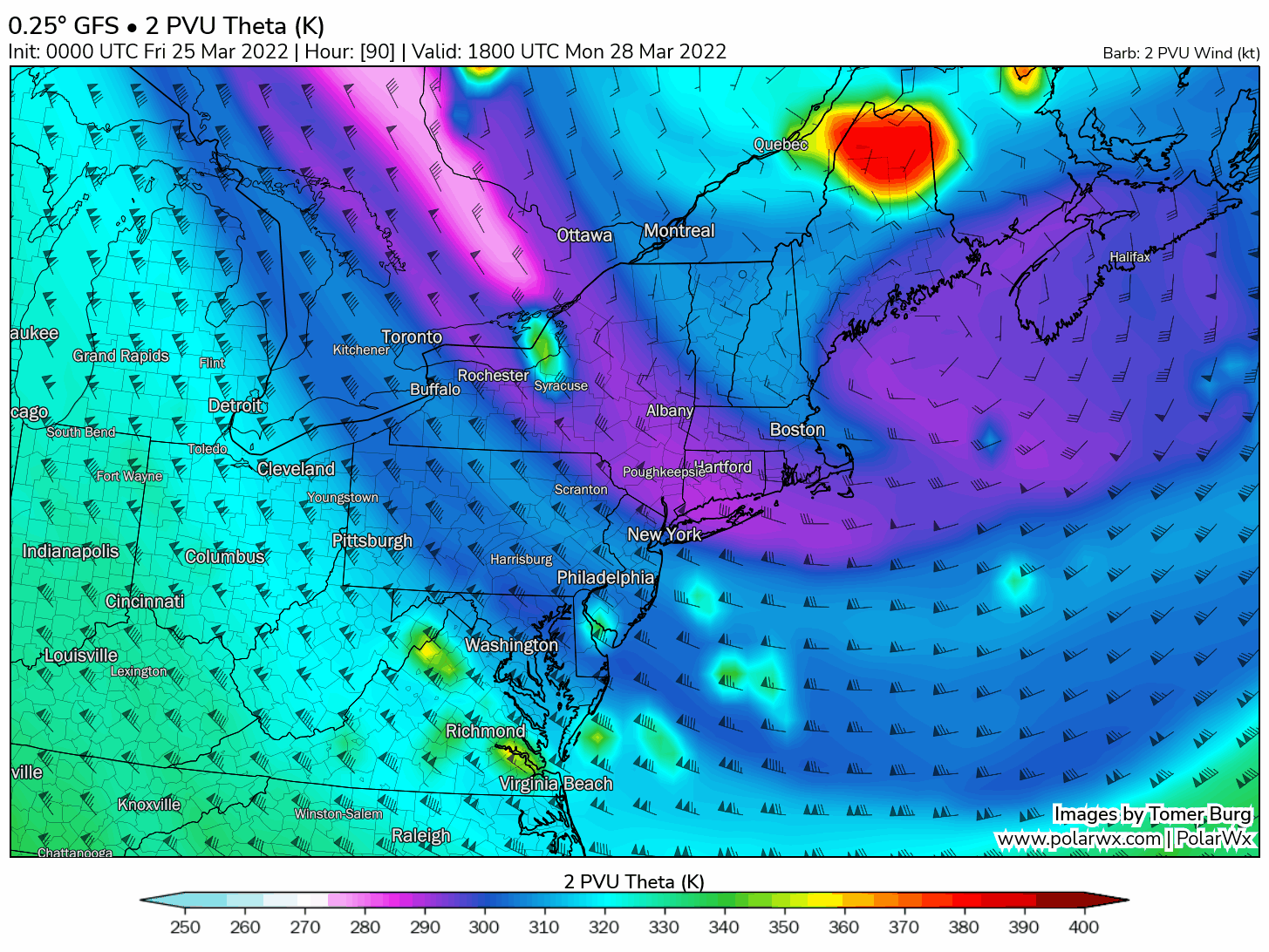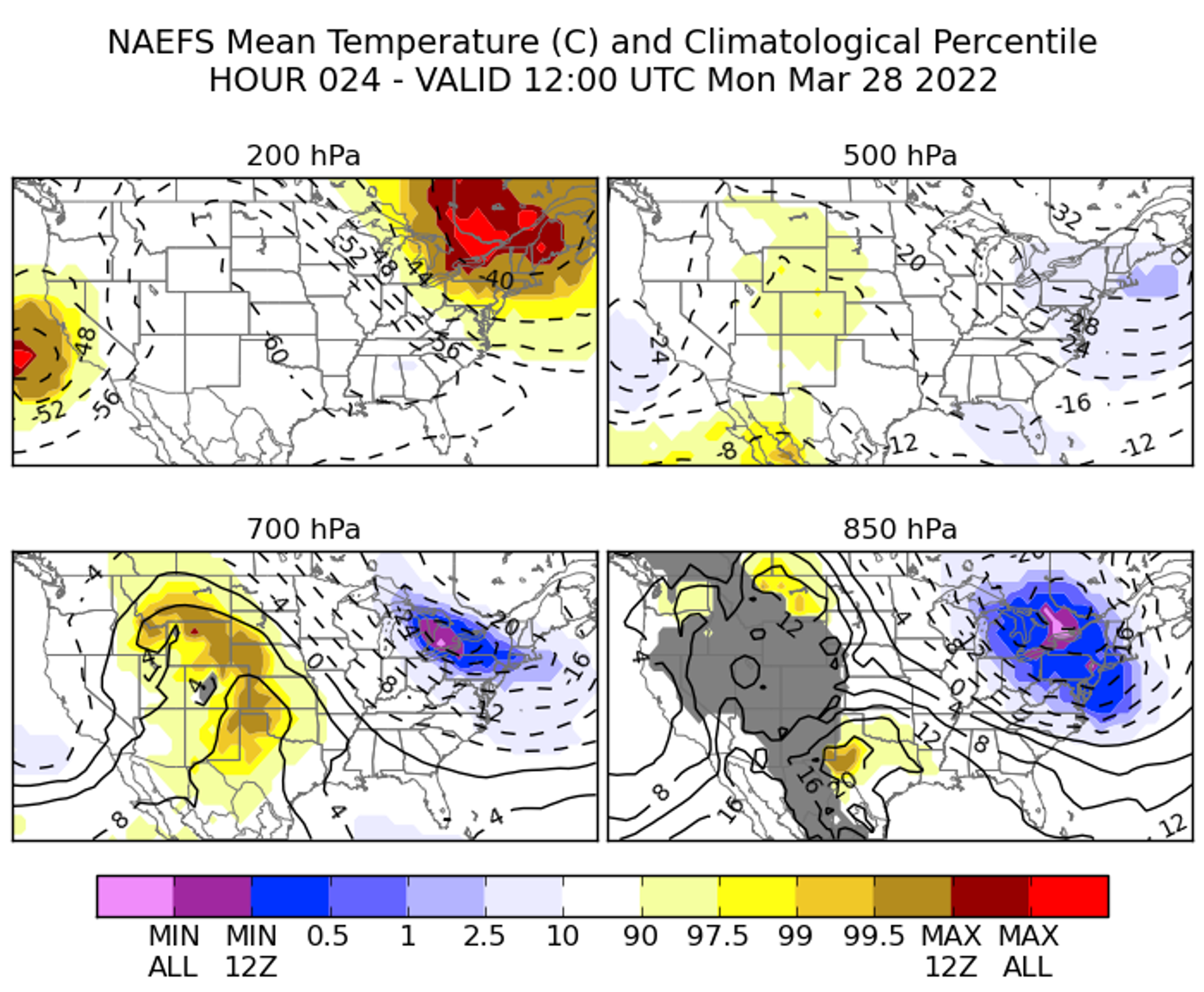
Trend in 2 PVU potential temperature over the last 12 GFS cycles.

Trend in 2-meter temperature (F) over the last 12 GFS cycles.

Trend in forecast sounding over Northeast PA over the last 12 GFS cycles.
-
The planetary boundary layer (PBL) trends much colder, indicative of the anomalous cold beneath the TPV relative to its surroundings
-
The tropopause height trends much lower, ending up around 650-hPa as of the latest GFS forecast
-
The lower stratosphere trends warmer, indicative of the anomalous warmth above the TPV relative to its surroundings

Trend in PV cross-section through the TPV over the last 12 GFS cycles.
This begs the question - how important is the TPV to the evolution of this anomalous cold air mass? This is of course only one case, and this is more of a qualitative than a quantitative assessment of it. There is also the question of how much is the cooling trend due to the added presence of the TPV, as opposed to the synoptic-scale trough trending more southwest which also expands the south/west extent of cold air. Even so, it appears that there would've still been unusually cold air regardless, but the added presence of a TPV results in colder temperatures than what would've otherwise been the case.
 NAEFS forecast temperature percentile rank, courtesy of the NWS Situational Awareness Table.
NAEFS forecast temperature percentile rank, courtesy of the NWS Situational Awareness Table. Idealized schematic of an isolated TPV.
Idealized schematic of an isolated TPV. GFS forecast 2 PVU potential temperature (2 PVU = dynamic tropopause), valid Monday afternoon.
GFS forecast 2 PVU potential temperature (2 PVU = dynamic tropopause), valid Monday afternoon. Trend in 2 PVU potential temperature over the last 12 GFS cycles.
Trend in 2 PVU potential temperature over the last 12 GFS cycles. Trend in 2-meter temperature (F) over the last 12 GFS cycles.
Trend in 2-meter temperature (F) over the last 12 GFS cycles. Trend in forecast sounding over Northeast PA over the last 12 GFS cycles.
Trend in forecast sounding over Northeast PA over the last 12 GFS cycles. Trend in PV cross-section through the TPV over the last 12 GFS cycles.
Trend in PV cross-section through the TPV over the last 12 GFS cycles.